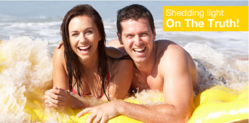Media Releases
Indoor Tanning Equipment in the Spring can make Vitamin D
Indoor Tanning Equipment in the Spring can make Vitamin D
Canadians can’t obtain vitamin D from natural sun exposure in the months of October through April. The Joint Canadian Tanning Association wants Canadian to know published research, and anecdotal evidence, actually shows that indoor sunbathing may be a more effective option for increasing vitamin D levels than supplements.

When tanning indoors or outdoors be Responsible. Everything in Moderation!
Kelowna, BC (PRWEB) March 27, 2013
Canadians can’t obtain vitamin D from natural sun exposure in the months of October through April. The Joint Canadian Tanning Association wants Canadian to know published research, and anecdotal evidence, actually shows that indoor sunbathing may be a more effective option for increasing vitamin D levels than supplements.
A study from Boston University School of Medicine found that even when taking 400 International Units (the mean recommendation from Health Canada) of vitamin D daily, levels are likely to decline into deficiency. Whereas, participants who received UVB exposure from tanning equipment three times a week had levels that continued to increase.
A 2012 European study also showed that three sunbed sessions a week is more effective at raising vitamin D levels to an optimal point than a daily 1000 IU supplement.
A personal experiment by Joint Canadian Tanning Association Executive Director Steve Gilroy also supports the conclusion from those studies on increasing vitamin D levels. Since 2009, Gilroy has taken part in the GrassrootsHealth D*Action vitamin D testing program. As a regular indoor tanner, for his first testing in February of 2009, Gilroy had a vitamin D serum level of 112 nmol/L, well within the optimal vitamin D serum level (100-150 nmol/L) recommended by GrassrootsHealth and its panel of leading Vitamin D scientists.
But, out of curiosity, Gilroy decided to stop tanning and see how his vitamin D serum level was affected. He stopped indoor tanning after his February test and continued taking a 400 IU supplement every day. He took a walk every morning and only wore sunscreen when necessary to prevent sunburn, like when he played golf or was on a boat. By his next vitamin D test in August, Gilroy’s vitamin D serum level had dropped from 112 nmol/L to 62 nmol/L. Even after going through the sunny summer and spending an average amount of time outdoors, his vitamin D level was cut nearly in half.
“I was interested in finding out how my indoor tanning was affecting my vitamin D level and to see if recommendation from Health Authorities were either correct or not,” Gilroy said. “I did everything else exactly as I normally would.”
After taking up tanning again following that test, Gilroy’s level returned to 122 nmol/L when tested in April 2010. Then, to confirm his finding, Gilroy stopped tanning again. By his next test in September 2010, Gilroy’s vitamin D serum level had again dropped to 70 nmol/L.
Gilroy’s anecdotal evidence backs the findings of multiple published research studies – that indoor tanning is an effective way to maintain optimal vitamin D levels, especially in the spring.
“We’re not saying that indoor tanning is for everybody,” Gilroy says. “But, it is certain that it’s a viable option for raising vitamin D levels, especially given the lack of sunlight that we face in the spring and winter. Everyone should know, you don’t need to get a tan to make Vitamin D from a sunbed that produces UVB light.”
For more information, and to find a professionally certified indoor tanning salon in your area, visit http://www.tanresponsibly.ca.
The Joint Canadian Tanning Association (JCTA) is a national non-profit organization created to increase understanding of the professional tanning industry’s scientifically supported position that regular moderate ultra-violet exposure from sunshine or sunbed in a non-burning fashion is part of a responsible lifestyle that recognizes both the inherent benefits and the manageable risks associated with ultraviolet light exposure.



